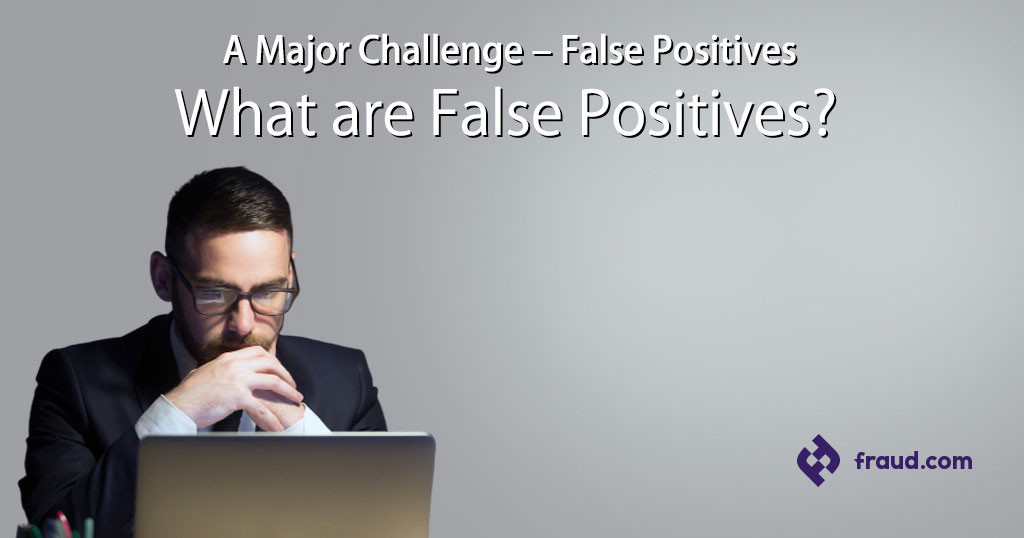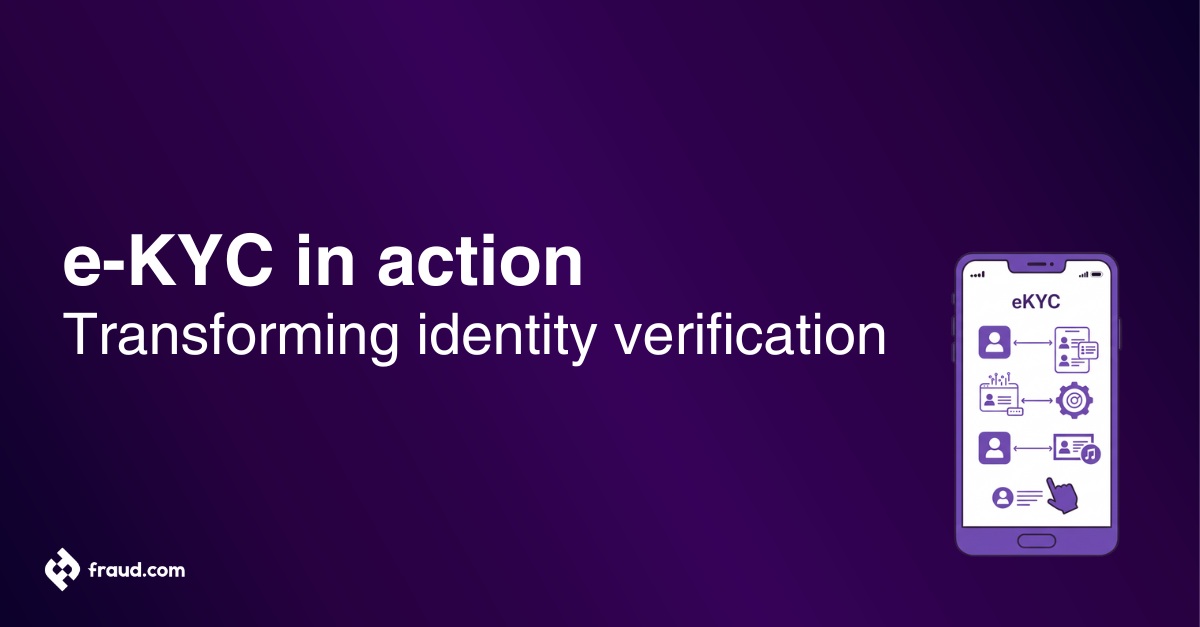Table of Contents
ToggleWhat are False Positives?
A false positive is when a legitimate transaction is flagged as suspicious, shutting down the payment or locking an account down completely, in other words, a user is incorrectly identified as a fraudster. These errors occur when a non-fraudulent transaction somehow triggers a bank’s fraud detection system resulting in the bank denying the completion of the transaction. Kount, a digital fraud prevention company, reported a cost of $2 billion for e-commerce merchants in the USA alone due to false positives11. Similarly, Lloyd’s reports that fraud costs e-commerce merchants 7.6% of their annual revenue and false positives cost them 2.8% of revenue4. This statistic displays how big of a problem these errors have caused to the booming e-commerce industry.
False positives erode customer trust and adversely impact reputational image when a legitimate sale is lost. An article by Forbes affirms that a study found that 40% of consumers in Europe say they won’t do business again with a merchant which declined the card when it was a legitimate purchase12. Banks are working tirelessly to cut down on the number of false positives disrupting the e-commerce and retail markets. According to IBM, it is very common to have high false-positive rates within financial institutions, above 90%3. This is a significant figure which indicates that organisations should be adopting advanced technology with complete and accurate data. Let’s look at a few ways the banking industry is addressing the false-positive epidemic.
How Banks are Addressing False Positives
The e-commerce business industry has been thriving for some time now, and there are no signs of slowing down in sight. Statista claims that from 2014 to 2021 the number of online buyers will increase by 62%, from 1.32 to 2.14 billion global digital buyers6. This means the number of digital transactions (e.g. card not present) will continue to elevate creating unique challenges for the banking industry. One of these unique challenges is false positives, a technology-driven error which causes adverse harm to retailers who are trying to secure new business from customers. According to CreditCards.com, 4 in 10 consumers say they have received alerts from banks that falsely flagged legitimate purchases7. This alongside the increase of transactional volumes, fraud and new regulations creates more pressure on banks, it is an ever-changing environment that they are practically obliged to adapt to effectively.
How to Address False Positives
Adaptive and Dynamic Technology
High-risk transactions should be correctly identified and measured, they are classified as fraud based on the risk score. Predictive technology such as machine learning is used to analyze several data points within a single transaction, producing a value that is used to score the transaction based on the level of risk. KPMG’s 2019 global fraud survey notes that false positives are negatively impacting banks which in turn hurts the e-commerce market. The survey found 51%5 of respondents reported a significant number of false positives resulting from current technology solutions, decreasing efficiencies in fraud detection. Therefore, banks should embrace technological advances such as automation and machine learning. This will help lower the number of false positives costing e-commerce retailers billions every year.
As banks focus on reducing false positives they also run the risk of missing real suspicious activity. According to Microsoft Azure, a 360-degree view is demanded more context to reduce false positives; this can be achieved by using automation9. Consequently, banks are ‘forced’ to process high numbers of false positives as they may be subject to regulatory action, this results in the need to pursue artificial intelligence and machine learning. This provides e-commerce retailers with the added safety needed to reduce the number of fraudulent transactions and chargebacks. Continuous machine learning will ensure fraud scoring is dynamic, and not stagnant in helping banks and retailers identify high-risk activities before it is too late. Automated technology will help banks be better at deciphering legitimate transactions from suspicious ones.
Embracing Real-Time Data
In today’s digital world, fraud moves faster than ever. This creates a challenge for the banking industry as they attempt to outpace fraudsters’ illicit activities. Real-time data allows banks to make decisions fast to keep transaction processes running smoothly while addressing fraud occurring across several banking channels. Real-time data allows banks to make informed decisions on the spot to help decrease inaccurate trigger alerts which result in false positives. As reported by a recent study, fraud detection systems require instantaneous responses to be effective10. Real-time data should also be valid and reliable so that results are accurate and conclusive. Real-time time transaction monitoring and data are enabled by AI and deep learning, according to an article by globalbankingandfinance.com, they are giving banks’ fraud investigation teams the ability to investigate crime in real-time, tackling complex, highly varying functions8.
Real-time data is highly useful when it is available. Any downtime in fraud prevention systems will increase the risk of false positives halting payments at checkout. According to the ACFE, a big risk is created by fraud, therefore big data thinking, and monitoring tools which embrace the analysis of data in real-time facilitate a rapid response to prevent suspicious or fraudulent transactions2. It is always critical for banks to have their data systems up and available, even a small window of offline fraud systems can leave e-commerce businesses vulnerable to increased costs due to chargebacks or lost sales. The partnership of real-time data and continuous system uptime will result in reduced false positives, elevated customer experiences, and higher revenues.
Adopting Fraud Orchestration
Fraudsters tend to keep up with all the progressive technological advances by adopting upgraded and more sophisticated fraud techniques. Therefore, banks must adopt game-changing solutions in the fight against fraudsters. A survey by EY implies that companies need to look at a broader set of risks, incorporate more data sources, use better tools and move to real-time or near real-time analysis of increased data volumes1. Fraud orchestration generates a centralised platform where fraudulent activity can be viewed from a single location by incorporating systems with all the data needed to effectively detect and prevent fraud. Fraud orchestration automates fraud prevention with real-time data analytics, which in turn aids the identification of fraud and reacts to it instantly. This allows banks to develop customer profiles based on spending patterns which can assist e-commerce businesses to oversee their customers in real-time to prevent false positives from inaccurately triggering fraud detection systems.
Fraud orchestration not only reduces fraud but it provides banks with holistic behavioural data which contrasts the internally fragmented data banks possess on their customers. Uniting all the data needed to effectively detect and prevent fraud leads to accurate decisions being made if a transaction is suspicious or doesn’t align with behavioural patterns based on historical data and other factors such as biometrics. Fraud orchestration is significant for the decrease in the number of false positives, which adversely impacts all stakeholders; e-commerce businesses, banks, and consumers. An enterprise-wide view brings transparency to fraud prevention, which is critical in today’s digital retail world, one that right now is moving faster than the speed of light.
Wrapping Up
False positives are unequivocally creating significant customer friction. The banking industry is under pressure to drive down the number of false positives stopping genuine transactions in their tracks. E-commerce businesses are limited in the internal data they possess on a customer and their order history. However, banks could take a more enterprise-wide view of customers, having the ability to scan transactions occurring across multiple banking channels and effectively identifying real fraud. False positives are a significant inconvenience for the e-commerce industry overall and a clear and unquestionable concern to banks. These system errors extremely damage customer experiences while increasing expenses for both merchants and banks.
As digital fraud continues to rise across the globe, the banking industry has a challenge it must seek to control and decrease. The digital assets specified in this report will benefit all fraud stakeholders, from the fraud investigation teams to the CEO of a bank, permitting legitimate transactions for online retailers and consumers while leaving fraudulent transactions out in the cold. Technology is and will continue to evolve, but so will fraudsters, it is remarkably interesting to see how technology benefits the improvement and progressive evolution of detection and prevention methods against fraud. These methods will help drive down such a problem for the new digital retail market, stay tuned.
Addressing false positives with aiReflex
aiReflex is a powerful tool for businesses and organisations that need to identify and address false positives. It uses a combination of advanced machine learning algorithms and artificial intelligence to accurately detect and identify false positives in a wide range of data sets. By leveraging aiReflex’s powerful algorithms, organisations can quickly identify false positives and take necessary action to prevent them from occurring.
aiReflex uses a combination of supervised and unsupervised machine learning techniques to identify false positives. The supervised learning techniques are used to train the system on data sets that contain known false positives and the unsupervised techniques are used to detect false positives in data sets that haven’t been seen before. aiReflex also uses natural language processing to detect potential false positives in text-based data sets. This helps businesses identify false positives in large data sets quickly and efficiently.
Once false positives are identified, aiReflex can automatically address them. This helps organisations maintain accurate data and prevent false positives from occurring in the future. aiReflex also offers customisable options to help businesses tailor their approach to addressing false positives in their data sets. This makes it easier to find the best solutions to address false positives in their data sets.
References
- “Big data. Changing the way businesses compete and operate”. Access at: https://www.ey.com/Publication/vwLUAssets/EY_-_Big_data:_changing_the_way_businesses_operate/%24FILE/EY-Insights-on-GRC-Big-data.pdf
- Big data”. Access at: https://www.acfe.com/article.aspx?id=4294983057
- “Fighting Financial Crime with AI”. Access at: https://www.ibm.com/downloads/cas/WKLQKD3W
- “Fighting Fraud in the age if AI”. Access at: https://www.lloydsbankcardnet.com/content/pdf/Lloyds_AI_Fraud_Whitepaper.pdf
- “Global banking fraud survey”. Access at: https://assets.kpmg/content/dam/kpmg/xx/pdf/2019/05/global-banking-fraud-survey.pdf
- “Number of digital buyers worldwide from 2014 to 2021 (in billions)”. Access at: https://www.statista.com/statistics/251666/number-of-digital-buyers-worldwide/
- “Poll: Credit card fraud alerts surge, false alarms still common”. Access at: https://www.creditcards.com/credit-card-news/credit-card-fraud-alert-poll.php
- “REAL-TIME FRAUD DETECTION WITH AI SET TO SAVE BANKS MILLIONS”. Access at: https://www.globalbankingandfinance.com/real-time-fraud-detection-with-ai-set-to-save-banks-millions/
- “Reduce false positives, become more efficient by automating anti-money laundering detection”. Access at: https://azure.microsoft.com/en-gb/blog/reduce-false-positives-become-more-efficient-by-automating-anti-money-laundering-detection/
- “Solving the false positives problem in fraud prediction using automated feature engineering”. Access at: http://www.ecmlpkdd2018.org/wp-content/uploads/2018/09/567.pdf
- “The Silent Sales Killer: False Positives”. Access at: https://www.paymenteye.com/wp-content/uploads/sites/19/2018/01/Kount_eBook_Silent_Sales_Killer_False_Positives.pdf
- “Three Digital Commerce Growth Opportunities”. Access at: https://www.forbes.com/sites/jordanmckee/2018/11/19/three-digital-commerce-growth-opportunities/#5f0202b83822









